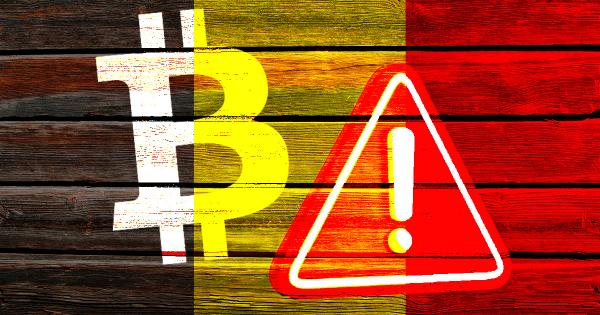
Discover the workings of blockchain forensics and asset tracking with real-world examples — e.g., enhance transparency, reduce fraud and improve security.
What are the possible future developments in blockchain forensics and asset tracking?
Blockchain forensics and asset tracking are rapidly evolving fields with many promising future developments. These developments could help increase transparency, reduce fraud and enhance security for various stakeholders in supply chains, financial systems and other industries.
The combination of blockchain forensics and asset monitoring with artificial intelligence (AI) and machine learning (ML) could transform the game in the future. Large data sets could be analyzed using AI and ML algorithms to find anomalies that might point to fraudulent activity. This might make it easier for regulatory and law enforcement organizations to look into and prevent financial crimes.
When Internet of Things (IoT) devices are adopted more widely, more assets may be tracked on the blockchain. IoT sensors, for instance, might be used to track the location and condition of cargo as it is being transported. As a result, supply chain participants might be able to follow and confirm the legitimacy of assets in real-time.
Moreover, smart contracts may be utilized in the future to simplify asset tracking and lower the possibility of fraud. For example, a smart contract could be created to automatically transfer ownership of an asset when payment is received.
In addition, zero-knowledge proofs could be used to provide securer and more private blockchain-based systems. Businesses and individuals who are worried about the privacy of their data may find this to be particularly important.
What are the benefits and limitations of asset tracking on the blockchain?
Asset tracking on the blockchain has significant limitations in terms of scalability, interoperability and absence of industry standards, but the advantages of greater efficiency, security and transparency make it a desirable option for many firms.
Blockchain technology offers various advantages for asset tracking, including improved efficiency, security and openness. The blockchain offers a tamper-proof ledger of all transactions, making it considerably more difficult for fraud to occur, which is one of the key advantages. Every transaction on the blockchain is confirmed by several network nodes, which increases security and lowers the possibility of fraud.
The blockchain also enables real-time asset tracking, which can improve supply chain management and lower the possibility of lost or stolen products. The ability to increase the effectiveness of financial procedures is another advantage of asset monitoring on the blockchain. Because blockchain-based asset monitoring does not require intermediaries such as banks or clearinghouses, transactions can be performed more quickly and for less money. This can help businesses save time and money while also improving their cash flow.
The blockchain does have some restrictions when it comes to monitoring assets, though. One of the key issues is scalability, as the blockchain can become slower and more expensive to use as the number of transactions increases. Interoperability is another issue because there are several distinct blockchain platforms in use, which can make it challenging to track assets across several networks.
Furthermore, despite the fact that the blockchain offers a high level of security, it is not totally impervious to hacking or other types of attacks. In addition, the lack of industry standards can make it challenging for businesses to embrace blockchain-based asset-tracking solutions.
How does asset tracking work on the blockchain?
Asset tracking on the blockchain is a process that involves recording and monitoring the movement of assets on the blockchain in order to improve transparency and accountability.
The following steps explain how asset tracking works on the blockchain, using Bitcoin (BTC) as an example.
Creation and registration of Bitcoin
When new Bitcoin is created, it is assigned a unique identifier known as a transaction ID (TxID), which is recorded on the blockchain. The BTC can be followed as it travels across the blockchain network using this identity.
Bitcoin transfer
The blockchain keeps track of all Bitcoin transfers that take place among users. As a result, a permanent record of the ownership and transaction history of BTC is created. For example, if User A sends 1 BTC to User B, the transfer is recorded on the blockchain and assigned a new TxID.
Validation and verification
The legitimacy and ownership of a Bitcoin may be confirmed at every point of its path by looking at the blockchain record. By doing this, fraud is reduced, and double-spending and counterfeiting of BTC are prevented. For instance, when User B receives the Bitcoin, they can check the blockchain transaction to make sure the BTC they received is genuine and hasn’t already been spent.
Reporting and analytics
Moreover, reports and analytics on the movement of BTC, such as the quantity of Bitcoin transferred or the overall number of BTC transactions, can be generated using the blockchain record. This can assist companies in recognizing patterns and enhancing their financial procedures.
In addition, the blockchain record can be used to settle a dispute regarding the ownership or movement of a Bitcoin. This is so that the ownership and movement of Bitcoin can be clearly and independently verified thanks to the immutable blockchain record. For instance, the blockchain record can be used to ascertain what user has the rightful claim if there is a disagreement about who is the rightful owner of a specific Bitcoin.
What are the applications of blockchain forensics?
Blockchain forensics is a rapidly growing field that has a wide range of applications in the modern digital economy. The demand for powerful and efficient forensic analysis tools is rising as blockchain technology is used more frequently for financial transactions. Blockchain forensics can be applied to boost the overall security of the blockchain ecosystem, monitor compliance, manage risk and look into fraud and financial crimes.
Investigating fraud and financial crimes is one of the key uses of blockchain forensics. Investigators can help to discover people and organizations involved in illegal activities such as money laundering and terrorism funding by studying blockchain data to find patterns and links between transactions and addresses. This information can be used to prosecute offenders and prevent similar crimes from happening in the future.
Monitoring compliance is a crucial use for blockchain forensics. Several regulatory requirements, including Know Your Customer (KYC) and Anti-Money Laundering (AML) laws, may apply to blockchain-based transactions. Blockchain forensics tools can assist in ensuring that businesses and individuals adhere to these standards by tracking the flow of funds and assets on the blockchain. They can also notify regulators of any suspect activity.
Risk management for blockchain-based transactions can also be done via blockchain forensics. Blockchain forensics can assist firms in identifying and reducing risks related to money laundering, fraud and other illegal activities by helping them to find patterns and linkages between transactions and addresses. This can aid in shielding people and companies from monetary losses and reputational harm.
Ultimately, blockchain forensics can help to improve the blockchain ecosystem’s overall security. Blockchain forensics tools can aid in discouraging potential criminals from utilizing the blockchain for illegal operations by spotting and looking into criminal activity. This can help to maintain trust in the blockchain ecosystem and ensure that it continues to be a safe and reliable platform for financial transactions.
What are the various techniques for analyzing blockchain data?
Blockchain forensics involves the analysis of blockchain data to investigate criminal activities such as fraud, money laundering and illicit transactions.
Nonetheless, the methods employed in blockchain forensics can vary depending on the particular application and the type of data being evaluated because it is a complicated and rapidly developing area. Yet by combining a variety of strategies and resources, investigators can better understand criminal activity on the blockchain and contribute to the fight against financial crime.
The following are some of the key techniques used in blockchain forensics.
Network analysis
Blockchain transactions take place inside a network of nodes. Using network analysis tools, it is possible to examine this network and spot any nodes that may be participating in illicit activity. Analyzing IP addresses, geolocation information and other network data may fall under this category.
Machine learning
With machine learning, it is possible to examine big blockchain data sets and find trends that could be challenging to spot using more conventional methods. Anomalies that can point to illegal activity can be found by grouping addresses, recognizing strange transaction patterns and other criminal activities.
Transaction graph analysis
Each transaction on a blockchain is connected to one or more prior transactions, forming a structure resembling a graph. Transaction graph analysis involves analyzing this structure to identify patterns and connections between transactions, which can help investigators to identify illicit activities.
Address clustering
Blockchain transactions are recorded using distinct cryptographic addresses, which is known as address clustering. Address clustering is a method for finding linked addresses and transactions by analyzing these addresses. This can aid investigators in locating people and groups engaged in criminal activity.
Data scraping
As blockchain data is made available to the public, it can be exploited to extract pertinent information using specialized tools. Transaction data, addresses and other metadata that may be utilized to spot trends and linkages between transactions are all examples of data scraping.
How does blockchain forensics work?
Depending on the particular application and the type of data being examined, the precise stages required in blockchain forensics can change.
But by adhering to a strict and organized procedure, investigators can learn important details about illicit activity on the blockchain and contribute to the fight against financial crime. The general steps in blockchain forensics are as follows:
- Data gathering: This entails gathering all pertinent blockchain data related to the inquiry. This may consist of block data, transaction data and other metadata.
- Data analysis: Many methods, including address clustering, transaction graph analysis, data scraping, network analysis and machine learning, are used to examine the data. These methods can be used to spot patterns and links between transactions and addresses, as well as to track down people and businesses engaged in illegal activity.
- Visualization of results: Investigators and other stakeholders can readily understand the outcomes of the data analysis thanks to the visualization. Charts, network diagrams and other visual representations fall under this category.
- Presentation of the evidence: The results of the analysis are presented in a way that is admissible in court or other legal proceedings. This may involve preparing reports, presenting evidence and providing expert testimony.
- Investigation closure: Once the investigation is over, the findings are used to choose the best course of action. This can entail going to court, recovering stolen property and taking other steps to prevent financial crime.

What is blockchain forensics?
A subset of digital forensics called blockchain forensics uses blockchain data analysis to look into illegal transactions, fraud and other types of criminal conduct.
Blockchain is a distributed ledger, which makes it a desirable tool for financial transactions and other applications because it records transactions in a transparent and impenetrable manner. Its decentralized and unchangeable character, however, also makes it a desirable venue for illegal activity.
In order to uncover trends and look into illegal activities, blockchain forensics entails the use of specialized tools and procedures to extract and analyze data from the blockchain. This includes looking into blockchain data such as transactions, addresses and other data, as well as locating and tracing people and groups engaged in illegal activity.
Many institutions, including law enforcement agencies and regulatory authorities, are investing in the creation of tools and knowledge in the rapidly expanding field of blockchain forensics. Effective blockchain forensics will likely become even more crucial in the fight against financial crime as the use of blockchain technology continues to grow.









